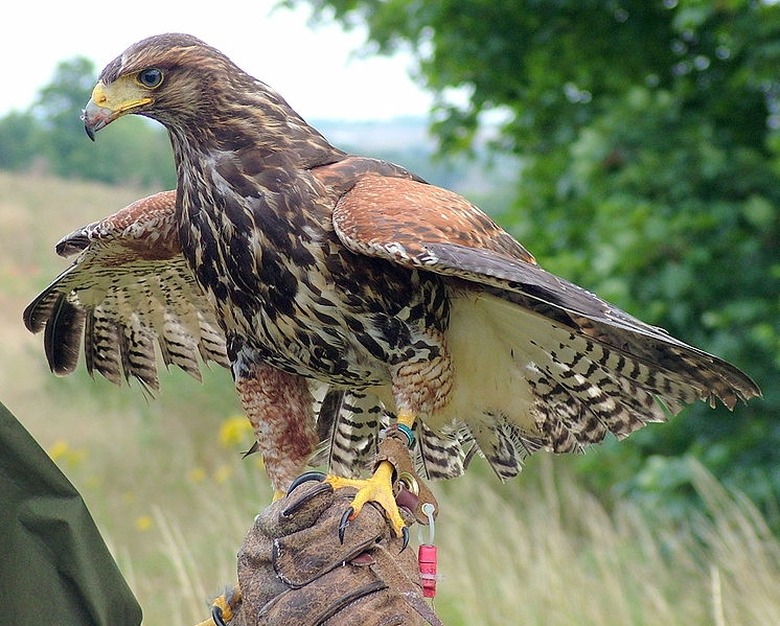How Do Buzzards Nest?
Buzzard/Turkey Vulture
In the United States, buzzards are often called turkey buzzards or turkey vultures. They inhabit southern Canada to South America's southern tip and are also found in Europe and Asia. Buzzards have bald heads and red beaks and practice unique flying, feeding and nesting styles. Buzzards hop around awkwardly on the ground and they struggle to become airborne, flapping their wings to take off. Once in the air, buzzards soar gracefully to great heights, riding thermal currents. They fly during the day seeking carrion, or dead meat, by sight and smell.
Building a Nest
Building a Nest
Turkey buzzards start their courtship and nesting season in March and it continues into May. The beginning rituals involve several turkey buzzards gathering in a circle and hopping around its edges with their wings partially spread. Then they take off an perform aerial acrobatics to attract a mate.
Turkey buzzards mate for life and after a pair have chosen each other, they search for a nesting site. At times, they don't gather twigs and other material to build their nests. Instead, they find a corner in a cliff, a cave, a rock crevice, a hole in the ground, a hollow tree or a thicket to lay their eggs. European buzzards often use heather or sticks or foliage for their nests.
Nesting and Nurturing
Nesting and Nurturing
The female turkey buzzard usually lays to three two creamy white eggs speckled with brown and lavender spots. Both the male and female buzzards sit on their eggs, which hatch after 30 to 40 days. Buzzard chicks are helpless when they are born and when they hatch they are covered with white down
Parent buzzards don't face too many threats from other birds or animals. Golden and bald eagles and great horned owls may kill adult and immature and fledging buzzards Raccoons, opossums and foxes eat buzzard eggs and nestlings., If something threatens the adults while they are nesting they may abandon the nest, regurgitate or vomit on the intruder or pretend to be dead. The buzzard defends itself by regurgitating partially digested meat. This vomit has a foul smell and keeps most intruders from raiding its nest. If it is close enough to get the vomit in its face or eyes, the predator is disabled by the stinging vomit. If it wants to fly away from a predator, the buzzard vomits to get rid of a heavy, undigested meal. Chicks respond to threats in the nest by hissing and regurgitating.
Both parents feed their chicks by regurgitating food for them and they care for their chicks from 10 to 11 weeks. Buzzard chicks fly at about 9 to 10 weeks, but they don't become independent of their parents for another 6 to 8 weeks after that. Family groups often stay together until autumn.
Cite This Article
MLA
Contributor, . "How Do Buzzards Nest?" sciencing.com, https://www.sciencing.com/do-buzzards-nest-5780259/. 24 April 2017.
APA
Contributor, . (2017, April 24). How Do Buzzards Nest?. sciencing.com. Retrieved from https://www.sciencing.com/do-buzzards-nest-5780259/
Chicago
Contributor, . How Do Buzzards Nest? last modified March 24, 2022. https://www.sciencing.com/do-buzzards-nest-5780259/
